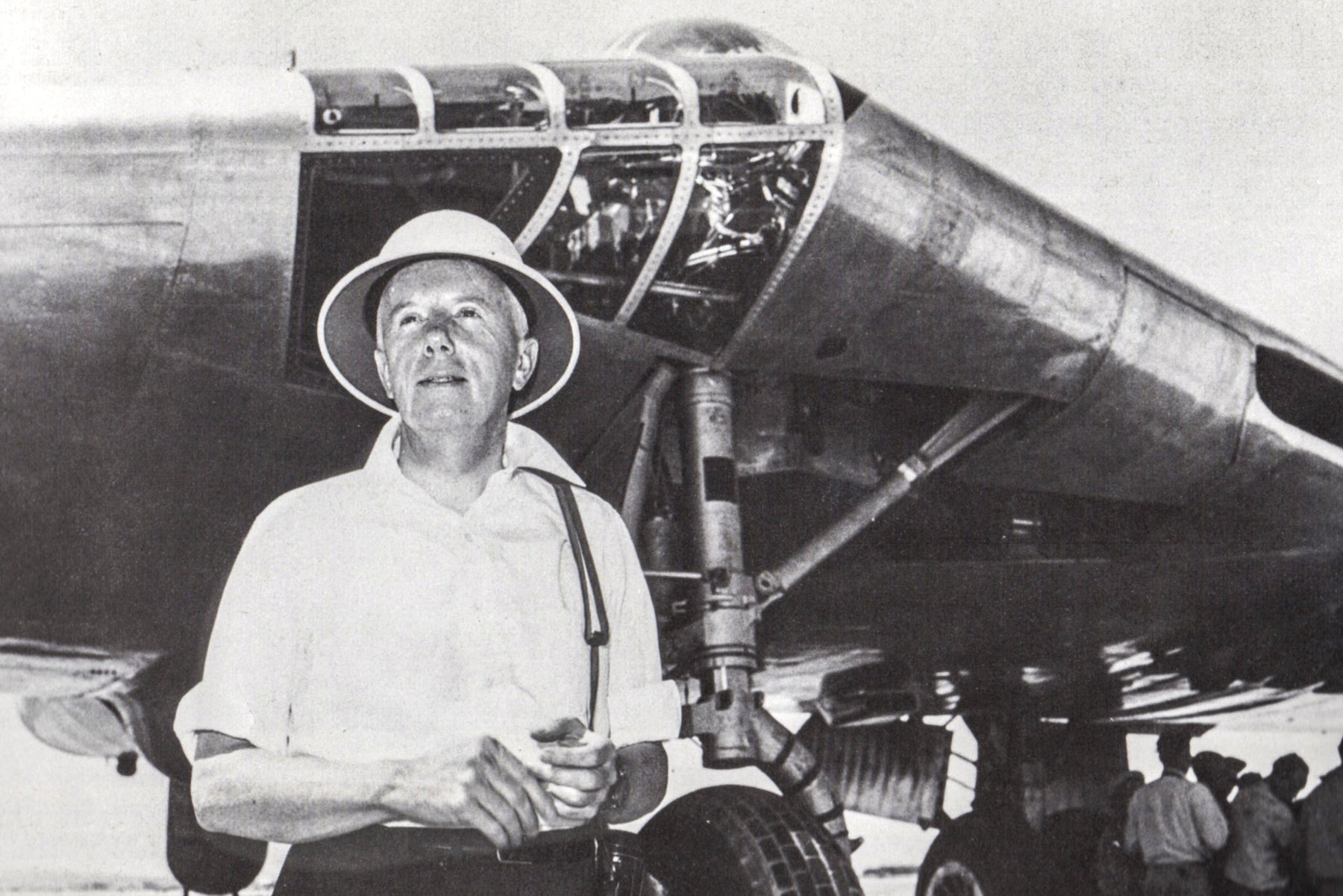
Aviation Appreciation Friday! ~ Jack Northrop
John Knudsen Northrop was a visionary whose name resonates with innovation. As the founder of Northrop Corporation and a trailblazer in all-metal aircraft construction, he left a lasting legacy in the aerospace industry. His groundbreaking flying wing designs, including the Northrop YB-35, remain a testament to his forward-thinking approach and engineering genius.

YB-35 Prototype
Photo Credit: Wikipedia ~ USAF
Early Life and Entry into Aviation
Born on November 10, 1895, in Newark, New Jersey, Jack Northrop showed an early fascination with mechanics and aviation. After finishing his education, Northrop’s career took off when he joined Lockheed Aircraft Corporation in 1927. During his time there, he played a key role in designing the iconic Lockheed Vega, one of the first aircraft to feature an all-metal monocoque fuselage. The Vega’s innovative design set new standards for performance and durability, earning its place in aviation history.
Founding Northrop Corporation
In 1939, Northrop founded the Northrop Corporation with a bold vision of advancing aviation technology. His company quickly became synonymous with innovation, leading the charge in the development of all-metal aircraft. These designs were not only stronger and more durable but also lighter and more efficient than the traditional wood-and-fabric constructions of the time. This shift revolutionized aircraft manufacturing and set the stage for modern aviation.
The Flying Wing Vision
Perhaps Northrop’s most daring and ambitious work was his flying wing concept. Inspired by the potential for greater aerodynamic efficiency and reduced drag, he envisioned an aircraft that eliminated the traditional fuselage and tail. The result was a design that promised unmatched fuel efficiency and extended range—attributes ideal for both military and commercial aviation.
The Northrop YB-35, a long-range strategic bomber developed during World War II, embodied this revolutionary concept. With its sleek, tailless design, the YB-35 boasted unprecedented flight capabilities. Although the project did not move into mass production due to the emergence of jet propulsion and shifting military needs, it paved the way for modern flying wing aircraft, including the iconic B-2 Spirit stealth bomber.

B-2 Spirit
Photo Credit: Wikipedia ~ USAF
Legacy of Innovation
Northrop’s contributions to aviation extended well beyond the flying wing. His company developed a series of groundbreaking aircraft, such as the P-61 Black Widow, the first U.S. aircraft designed specifically for night combat, and the F-89 Scorpion, one of the earliest jet-powered interceptors. His relentless pursuit of innovation also influenced advancements in aerodynamics, material science, and aircraft manufacturing techniques, shaping the future of aviation.

P-61 Black Widow
Photo Credit: Wikipedia

F-89 Scorpion
Photo Credit: Wikipedia ~ USAF
A Visionary Remembered
Jack Northrop’s ideas were often ahead of their time, and his visionary approach faced numerous challenges and setbacks. However, his commitment to innovation and pushing the boundaries of what was possible never faltered. Today, the flying wing concept he championed serves as a cornerstone of modern stealth technology, a fitting tribute to his pioneering spirit.
